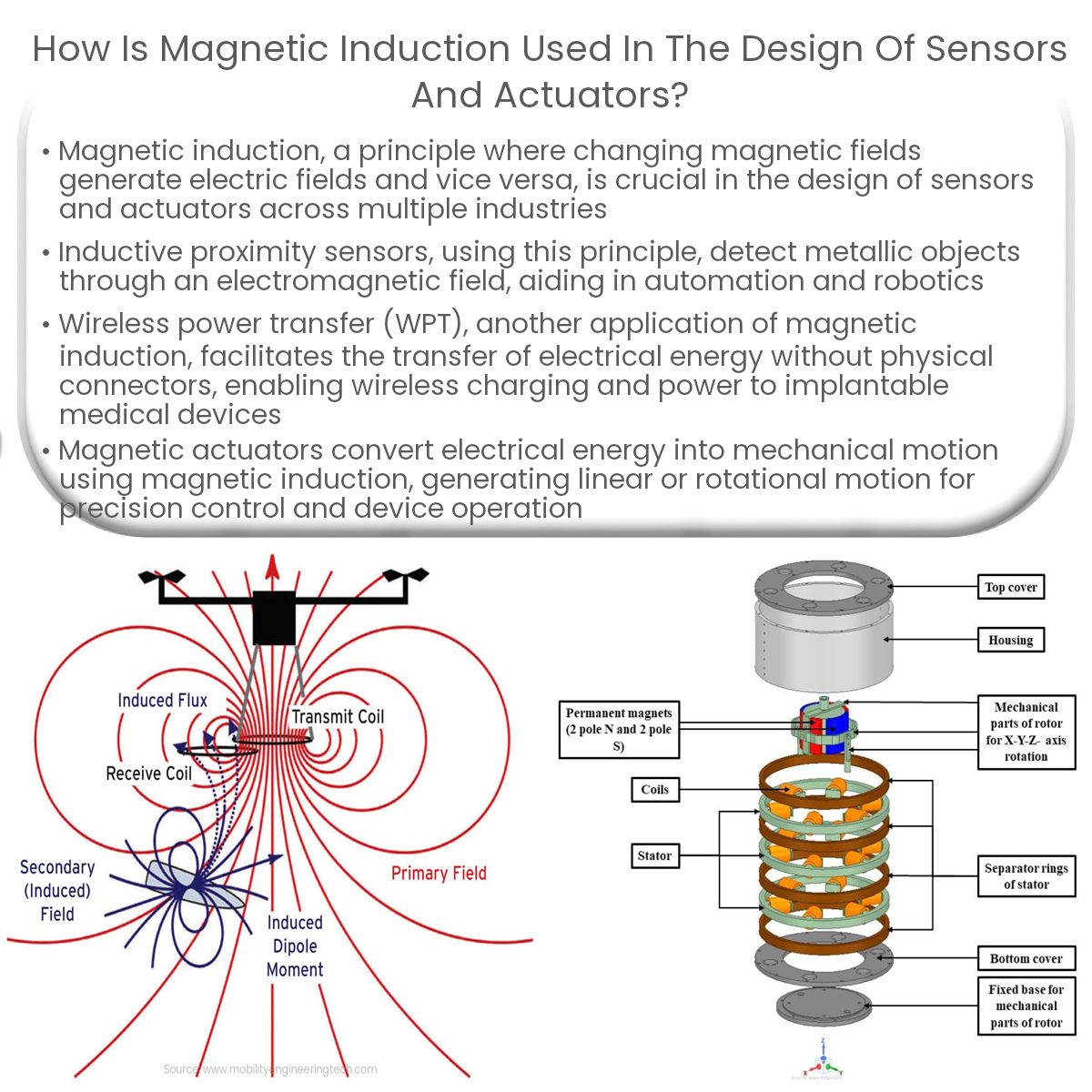Magnetic induction is used in designing inductive proximity sensors, wireless power transfer systems, and magnetic linear and rotary actuators.
Magnetic Induction in Sensor and Actuator Design
Magnetic induction is a phenomenon in which a changing magnetic field generates an electric field, and vice versa. This principle has been employed in the design of various sensors and actuators, enabling advanced applications in industries such as automotive, aerospace, and consumer electronics. In this article, we will discuss how magnetic induction is used in the design of sensors and actuators, focusing on inductive proximity sensors, wireless power transfer, and magnetic actuators.
1. Inductive Proximity Sensors
Inductive proximity sensors are non-contact devices that detect the presence of metallic objects by generating an electromagnetic field. They consist of an oscillator, a coil, a detector, and an output stage.
- Oscillator: Generates an alternating current that creates an alternating magnetic field around the coil.
- Coil: Produces an electromagnetic field that extends beyond the sensor’s surface.
- Detector: Monitors changes in the coil’s impedance due to the presence of a metallic object in the electromagnetic field.
- Output Stage: Generates a binary output signal based on the detector’s readings.
Inductive proximity sensors are widely used in automation, robotics, and manufacturing for object detection, position control, and safety applications.
2. Wireless Power Transfer
Wireless power transfer (WPT) is a technology that enables the transfer of electrical energy without physical connectors. Magnetic induction is the primary principle behind WPT, where a transmitter coil generates an alternating magnetic field that induces a voltage in a receiver coil. This voltage is then rectified and used to power or charge electronic devices.
WPT is used in various applications, including:
- Wireless charging for smartphones and electric vehicles.
- Powering implantable medical devices.
- Industrial automation and robotics.
3. Magnetic Actuators
Magnetic actuators are devices that convert electrical energy into mechanical motion using magnetic induction. There are two main types of magnetic actuators:
- Linear Magnetic Actuators: Generate linear motion using either an electromagnet or a permanent magnet and a ferromagnetic material. They are used in precision motion control, valve actuation, and robotics.
- Rotary Magnetic Actuators: Produce rotational motion through the interaction of a rotor with a magnetic field generated by a stator. They are commonly used in motors, pumps, and fans.
In conclusion, magnetic induction has enabled the development of innovative sensor and actuator technologies, with applications spanning various industries. This versatile principle continues to inspire new solutions for complex engineering challenges.


